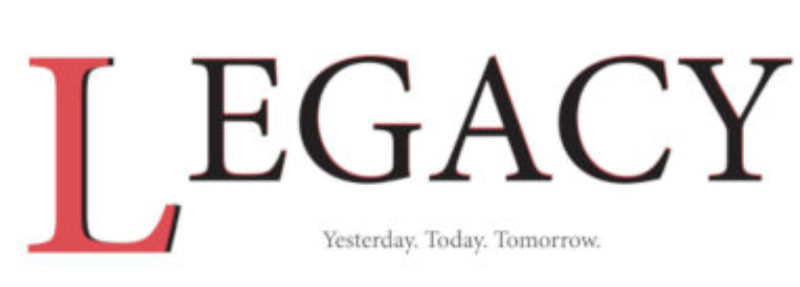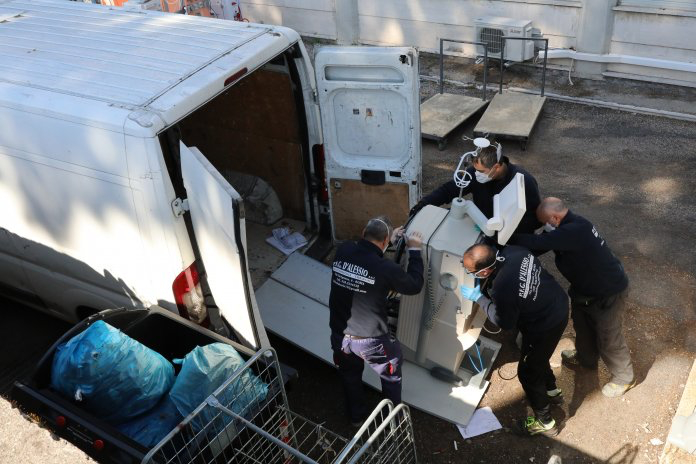By Kate Masters
(VM) – Amid a growing epidemic of COVID-19, the disease caused by a new strain of coronavirus, there’s a glaring spotlight on fundamental medical equipment.
Hospital beds and ventilators have become a matter of national concern, with federal experts citing limited supplies and possible shortages if there’s a surge in coronavirus-related hospitalizations. Virginia Health Commissioner Dr. Norman Oliver said Sunday that the state’s health care system would be “taxed” by wider spread of the disease.
President Donald Trump told governors Monday on a conference call: “Respirators, ventilators, all of the equipment — try getting it yourselves,” The New York Times and other outlets reported.
Virginia is working with hospitals and health care providers to boost capacity and mobilize more equipment if cases continue to rise, according to Health Secretary Dr. Daniel Carey. At a news conference on Tuesday — following the announcement of 67 total coronavirus cases and a growing number of community transmissions — he said the administration was “working together” with outside partners to understand how many new beds could be mobilized to meet growing demand.
At least right now, though, the state hasn’t publicly released specific information on its existing medical infrastructure. Carey said the governor’s team had estimates on the number of available hospital beds, but that information wasn’t immediately provided by the administration or Virginia Department of Health on Tuesday.
The state also hasn’t released additional information on the supply of personal protective equipment for medical workers. Last week, Oliver said he placed an order for $2.7 million in respirator masks, which filter out airborne contaminants — including viral droplets.
On Tuesday, Oliver said the department received a “portion” of what was ordered. But the state didn’t confirm how many masks it received or when the order was placed.
“We may be able to provide more information about the stockpile shipment tomorrow,” VDH spokeswoman Tammie Smith wrote in an email.
The department also didn’t provide specific information on the number of ventilators currently available in Virginia.
“In addition to on-site equipment, the regional coalitions that make up the Virginia Healthcare Emergency Management Program (VHEMP) have hundreds of ventilators in reserve across the vommonwealth that can be deployed to hospitals when needed,” Smith wrote. “Depending on the situation, other ventilator equipment could be deployed from the strategic national stockpile in the event that it is warranted.”
It’s unclear how many ventilators are currently on-site in Virginia. There are an estimated 20,000 ventilators in the national emergency stockpile, according to a report from Politico, but the federal government has not made information publicly available.
Uncertainty has been an enduring feature of COVID-19, both nationally and statewide. Testing shortages have limited the government’s ability to track and trace the spread of the disease, forcing officials to implement increasingly restrictive policies aimed at limiting the spread.
Virginia Gov. Ralph Northam announced new measures on Tuesday, including a 10-person limit at restaurants, gyms and theaters. Virginians over the age of 65 are encouraged to self-quarantine, and the state’s 75 Department of Motor Vehicle offices will be closed indefinitely.
Last week, the governor declared a state of emergency and closed schools for a minimum of two weeks. The state’s Department of Education is weighing the possibility of canceling standardized testing, and routine court activity has been postponed for at least 21 days.
Increasingly restrictive measures are largely a symptom of limited testing, said Madhav Marathe, director of the Network Systems Science and Advanced Computing Division at the University of Virginia’s Biocomplexity Institute. His team has been a leader in modeling and predicting the spread of the virus both globally and nationally.
More recently, he’s launched predictive models for individual states, including Virginia.
“What’s important to note is that these interventions are a double-edged sword,” Marathe said. “This is always a problem that policymakers face. Let’s say I intervene in January to shut down borders. It’s restrictive, it might not seem to do anything, and that’s something they’ll have to manage. On the flip side, if we wait for too long, too many people get infected and we see a huge impact on our social and economic well-being. Then people will say, ‘Why didn’t you do anything sooner?’”
Other countries have been able to ease or even avoid similar restrictions by ramping up their testing capacity, which allows infected patients to self-isolate and avoid transmitting the virus to other people. But testing shortages in the U.S. have forced state and local governments to impose those rules on everyone, he said.
Virginia has already recorded two coronavirus deaths in the Peninsula health district, which is currently experiencing a cluster of cases linked to two patients. A little more than 1,000 residents have been tested, according to the most recent figures from VDH, but Marathe estimated that there are likely several hundred existing cases that haven’t been tested.
“I think we should expect thousands of infections to occur in the state over the next few weeks,” he said. The latest interventions show promising signs of reducing the speed of transmission, but the effects could be negligible if residents don’t follow the new restrictions or if facilities, including schools and public buildings, are reopened in two weeks.
“I think we’ll be right back where we started if that happens,” Marathe said. The incubation period for COVID-19 can last up to two weeks, which means many people might already be infected but haven’t begun showing symptoms.
Gov. Ralph Northam convenes a cabinet meeting to discuss coronavirus response on Monday. (Gov. Ralph Northam’s office)
Marathe also also couldn’t provide the specific number of respirators in Virginia, but said the national supply, overall, would be insufficient to meet large surges in hospitalizations. In the best case scenarios, which include widespread testing followed by the strict isolation of infected patients, the U.S. medical system could likely keep pace with patients. In worse scenarios, cases of severe illness would outpace the current number of ventilators and hospital beds.
“Even a modest bump would be very challenging to our health care system, which is already very stressed,” Marathe said. “If something happens like what we’re seeing in Italy, we are really in bad shape.”



